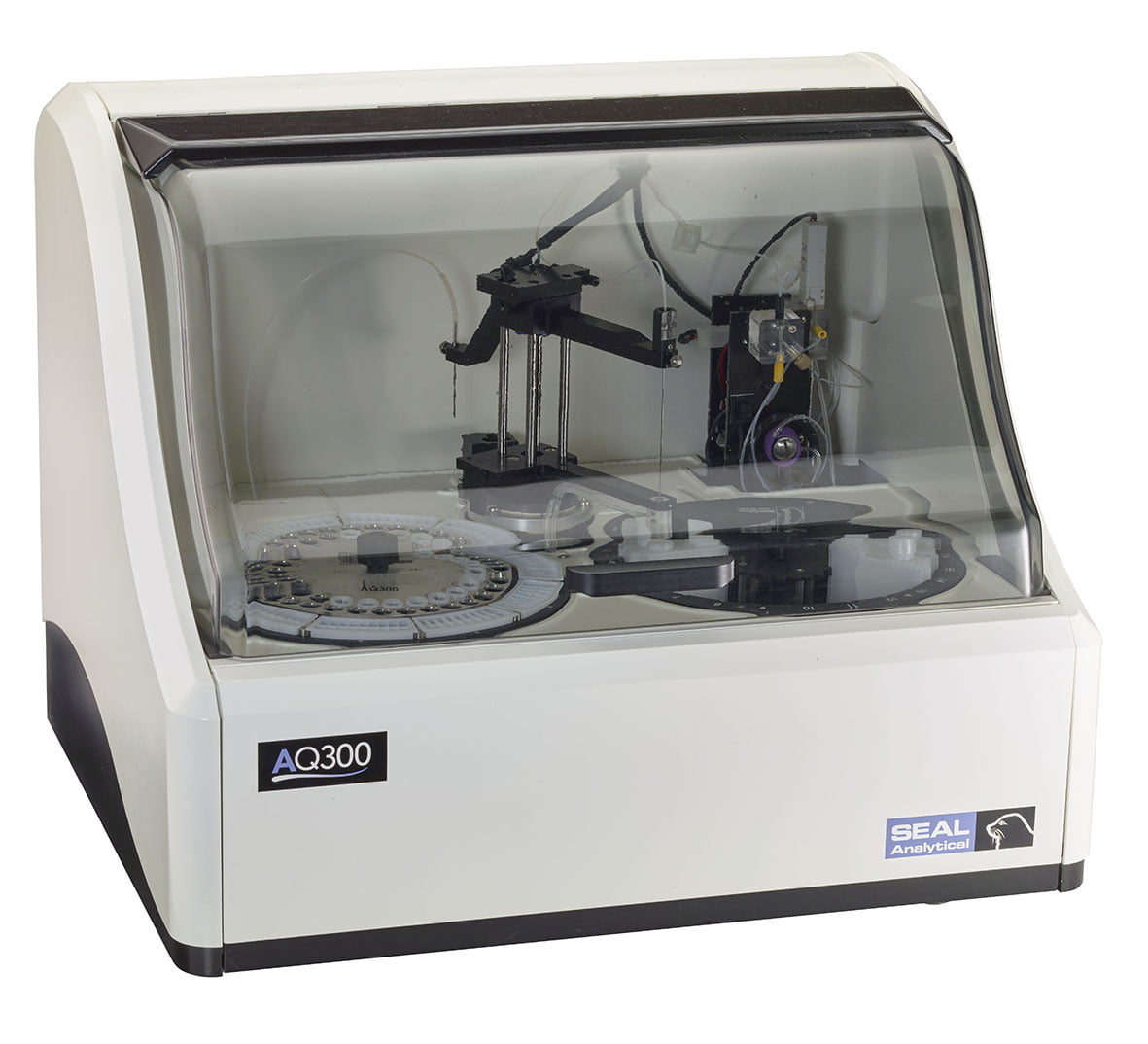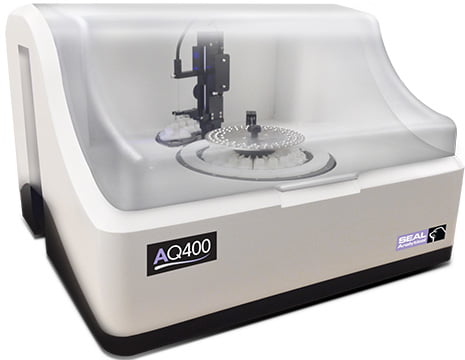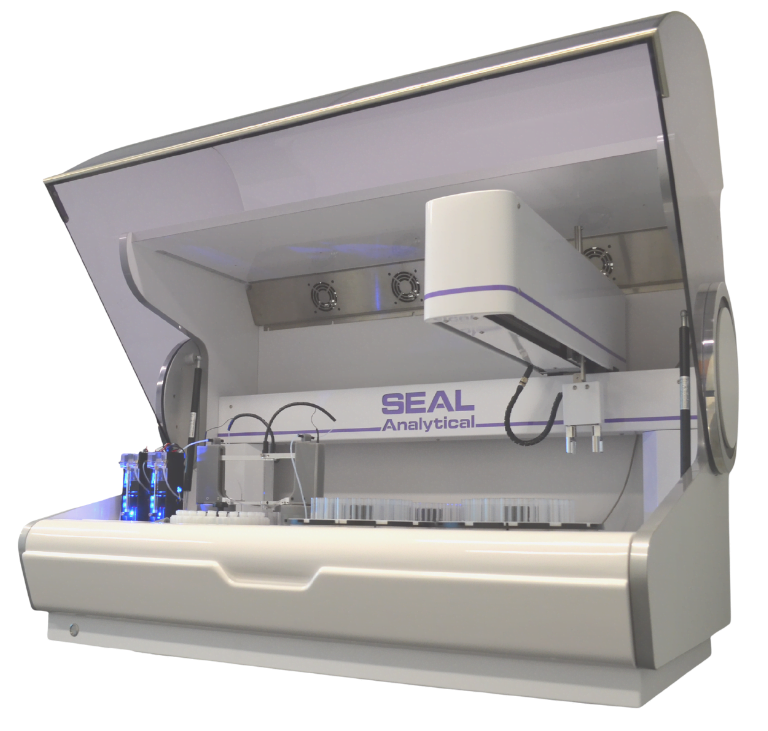The AQ300 Discrete Analyzer offers the same benefits as the AQ400 Discrete Analyzer, but with a smaller footprint and lower sample throughput, making it ideal for laboratories with limited space or smaller workloads.
Designed specifically for nutrient analysis on environmental samples, the AQ300 provides immediate results for many different parameters from the same sample. In the AQ300, all samples are read in exactly the same way in an optical glass cuvette, ensuring the best reproducibility and the lowest detection limits.
Its unique design prevents cross-contamination, even when analyzing ammonia, nitrate with cadmium reduction, and phenol together.
Why choose the AQ300?
Automation
- True unattended operation with the ability to run overnight
- Automated standard preparation and dilution of over-range samples
- True automated sample blanking for background color correction
- Automated sample spiking
Efficiency
- Ultra-low reagent consumption
- Ability to add samples after the run has started
- Easy maintenance & easy-change syringe
- Small footprint saves bench space real estate
Compliance
- No carryover or cross-contamination
- Lower detection limits
- Chemical reaction brought to full completion emulating manual and segmented flow methods
Methods include:
- Alkalinity
- Ammonia
- Chloride
- Cyanides
- Nitrate/ Nitrite
- Nitrite
- Phenolics
- Phosphate, ortho
- Phosphorous, total
- Silicate
- Sulfate
- Total Kjeldahl Nitrogen
- And more.
How does the AQ300 Discrete Analyzer work?
The SEAL AQ300 uses a robotic sampling arm and a stepper-motor driven syringe to aspirate, dispense, and mix precise quantities of sample and reagent. These are then placed into miniaturized test tubes (reaction wells) for analysis.
Samples and reagents incubate in the reaction wells for a pre-programmed time. A single aliquot is then transferred to the stop/flow optical-quality glass cuvette with a 10mm pathlength. The absorbance is read in the stationary optical bench to ensure the best signal-to-noise ratio.
Reaction times are programmable from seconds to minutes. The optimized methods ensure the chemical reaction reaches full completion and steady state, emulating manual and segmented flow methods.
Once the absorbance is ready, the cuvette cleans automatically and thoroughly, eliminating carry-over and cross-contamination.



